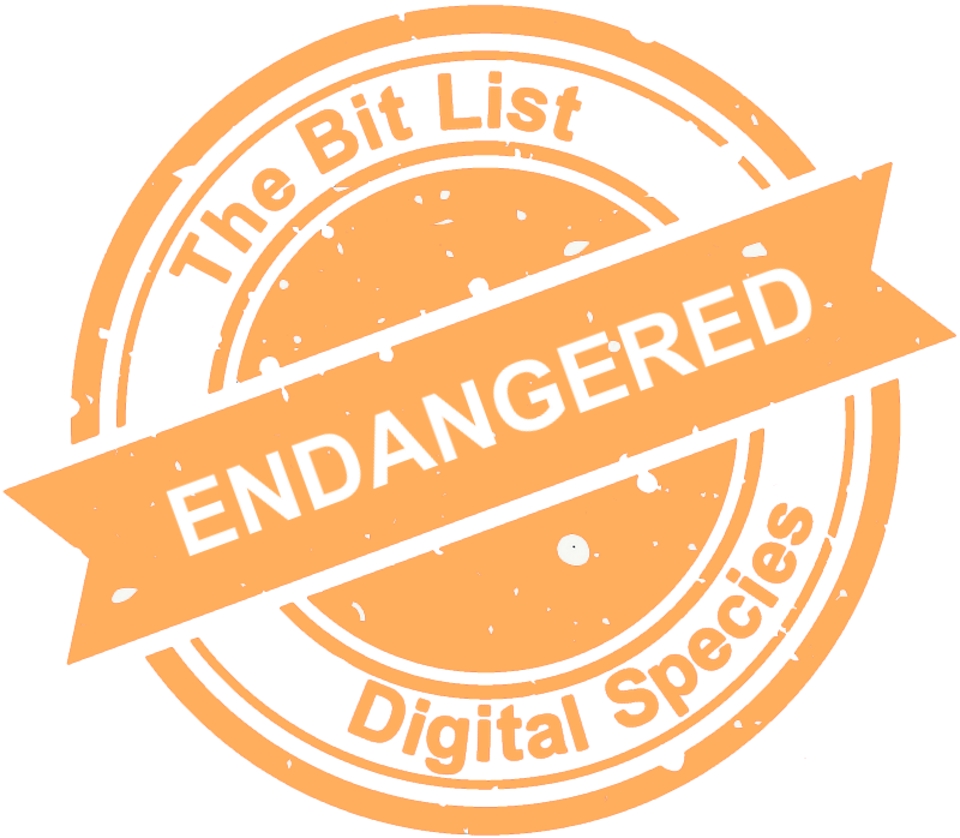 |
||
|
Documents, correspondence and other records created in the course of contractual dealings between individuals and agencies, especially where the subjects are of long duration and may be subject to legal scrutiny at undefined points in the distant future. |
||
|
Digital Species: Formats |
Trend in 2022:
|
Consensus Decision |
|
Added to List: 2017 |
Trend in 2023:
|
Previously: Endangered |
|
Imminence of Action Action is recommended within five years, detailed assessment within three years. |
Significance of Loss The loss of tools or services within this group would have a global impact. |
Effort to Preserve | Inevitability It would require a small effort to preserve materials in this group, requiring the application of proven tools and techniques. |
|
Examples Gmail, Hotmail, Yahoo Mail, Outlook, and email in all its forms including individual messages, threads of conversation, mailboxes, email servers and file attachments. |
||
|
‘Critically Endangered’ in the Presence of Aggravating Conditions Conflicting and unmanaged IPR; use of personal accounts for professional work and vice versa; proliferation and duplication of attachments; email not recognized as a record; absent, unworkable or inconsistent records management; dependence on free cloud-based services; lack of migration path; lack of preservation planning; perverse incentives to delete; encryption. |
||
|
‘Vulnerable’ in the Presence of Good Practice Application of appraisal and selection tools; timely transfer to preservation facility or archive; commitment to transparency; preservation policy; working preservation plan; clear migration path; widespread recognition of email as a record. |
||
|
2023 Review This entry was added in 2017, but the Jury did not have the capacity to assess it in detail. It was reviewed and assessed in 2019, including highlights to significant developments, including the recommendations of the Email Preservation Taskforce and the development of the ePADD software. Email presents many preservation challenges, from scale through core technologies, attachments, privacy and intellectual property rights. Because this entry intersects with many others, the aggravating conditions associated with email should be considered in conjunction where relevant. The 2021 Jury discussed the continued developments in email preservation tools and techniques as well as the growing number of archives preserving email content. At the same time, issues with providing access to preserved email content have arisen. Ongoing records management policies towards corporate or business email need to be better embedded to stop the loss of important email content, and more awareness is needed around the potential of personal email. While record-keeping legislation and mandates direct retention periods, email document decisions taken by government officials at local, regional and national levels are not always well maintained, if at all; a loss could impact people’s lives along with their ability to assert rights. For these reasons, there was a 2021 trend towards reduced risk, but the Endangered classification remained. The 2022 Taskforce agreed on a trend towards reduced risk based on material improvement over the last year with applied examples of good practice, including (but not limited to) approaches to creating a PDF format for the preservation of email, and improvements to existing software, tools and workflows supporting complex email preservation. The 2023 Council agreed with the Endangered classification and noted a decrease in the imminence of action and effort to preserve. |
||
|
Additional Comments The 2023 Council also recommended noting areas of overlap with the ‘Cloud-based Services and Communications Platforms’ entry as it pertains to the saving and preservation of email in cloud-based services such as Microsoft Sharepoint). Email is hugely important as it has been so pervasive as a communication mechanism for society. Some methods used and responsibility adopted for collecting at the business and public body level (again will differ globally), but this will be a fraction of the communities that use it, and few will be set up for the long-term care of this data. Case Studies or Examples:
See also:
|
||






























































































































